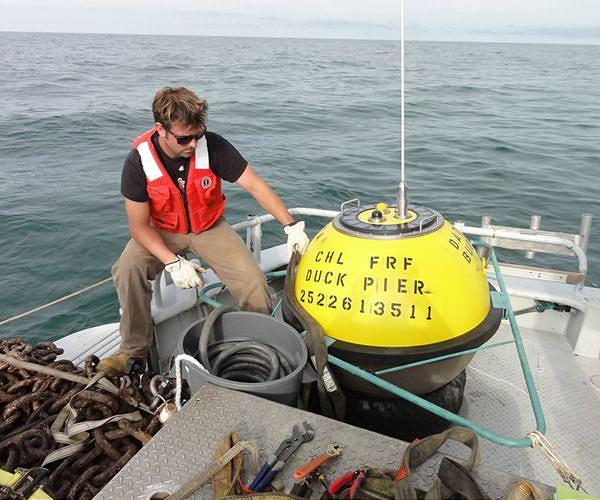University of Maryland to develop sustainable energy systems for ocean monitoring systems
University of Maryland researcher Stephanie Lansing has been awarded $7.8 million by the Defense Advanced Research Projects Agency (DARPA) to lead the development of a biologically powered energy system aimed at transforming power generation for ocean monitoring equipment worldwide.
Today’s ocean monitoring devices, essential for understanding marine ecosystems, tracking climate change, and maintaining national security, rely heavily on lithium-ion batteries or extensive underwater cables for power. Lansing’s groundbreaking project aims to replace these conventional systems by harnessing microorganisms and specialized bacteria to fuel a marine microbial energy source that can provide a stable 10 watts of power for more than a year.
“This unique collaboration of interdisciplinary experts will deliver a bio-inspired system that has breakthrough potential to deliver direct electrical current to enhance sensing capabilities while protecting and reducing environmental impact through the use of this unique bio- energy system,” explains Professor Lansing. in UMD’s Department of Environmental Science and Technology.
The system, known as the Persistent Oceanographic Device Power (PODPower), uses an advanced mechanism that collects ocean microbes and organic matter in a specialized fermentation chamber. Bacteria in this chamber preprocess the material into an efficient ‘fuel’ for other bacteria that colonize the electrodes of the microbial fuel cell, generating usable electricity.
Key design features include a fish gill-inspired catch net, a corkscrew-shaped auger for transporting organic material and a dual cathode system to improve energy yield. These innovations are expected to overcome the limitations of previous microbial fuel cell technologies.
PODPower is funded under DARPA’s BioLogical Undersea Energy (BLUE) program and joins initiatives to exploit ocean biomass for sustainable energy solutions. In addition to the $7.8 million allocated for Phase 1 development through 2026, an additional $3.4 million could be allocated for Phase 2, aimed at generating 100 watts of power and deploying systems in multiple environments.
The project includes collaboration with experts from Battelle, George Washington University, Harvard University, UMD Baltimore County’s Institute of Marine and Environmental Technology (IMET), James Madison University, Johns Hopkins University, University of Delaware and Yokogawa Corporation of America.

